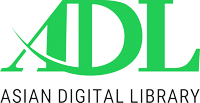The man enough paradox: Unpacking the tensions between masculinity and femininity in podcast discourse
Keywords:
Gender Representation, Masculinity, Femininity, Discourse Analysis, Feminist Critical Discourse Analysis, The Man Enough PodcastAbstract
Gender representation has been a salient area of research in media discourse; however, different genres of media discourse have not been investigated thoroughly. Podcast, a genre of media discourse, is one of them and requires both extensive and intensive research concerning gender representation. This study delves into the mechanism of how The Man Enough podcast describe masculinity and femininity, operating on the principles of Feminist Critical Discourse Analysis (FCDA) as a framework. With the help of Braun and Clarke’s thematic analysis, the research identifies the linguistic and narrative strategies used in the podcast to either challenge or fortify societal gender norms. The findings reveal that the podcast actively engages with feminist principles, redefining norms of traditional masculinity by shutting the doors of communication barriers and providing safe space for emotional openness and questioning deep-rooted gender biases. In addition to this, it encourages an inclusive dialogue that critiques patriarchal structures while recognizing the societal roles and expectations placed on men and women. By exposing these discursive patterns, this study helps in the deeper understanding of gender ideologies in media, examining the influential role of language in modelling perceptions of masculinity and femininity.
Downloads
References
Androutsopoulos, J. (2010). The study of language and space in media discourse. In P. Auer & J. E. Schmidt (Eds.), Language and space: An international handbook of linguistic variation (Vol. 1, pp. 740-758. De Gruyter Mouton.
Barrett, R. (2003). The politics of sexual identity: A sociolinguistic approach. In M. J. J. Farrelly & J. J. Y. Lee (Eds.), Language, gender, and sexuality: Theories and methodologies (pp. 45-67). Routledge.
Bucholtz, M., & Hall, K. (2004). Language and identity. In A. Duranti (Ed.), A companion to linguistic anthropology (pp. 369-394). Blackwell.
Cameron, D. (1992). Feminism and linguistic theory. Macmillan.
Carter, C., & Steiner, L. (2004). Critical readings: Media and gender. Maidenhead: Open University Press.
Connell, R. W. (1995). Masculinities. Polity Press.
Crawford, M. (1995). Talking difference: On gender and language. Sage.
Crenshaw, K. (1989). Demarginalizing the intersection of race and sex: A Black feminist critique of antidiscrimination doctrine, feminist theory, and antiracist politics. University of Chicago Legal Forum, 1989(1), 139-167
Eckert, P. (2002). Gender in variationist sociolinguistics. In J. Holmes & M. Meyerhoff (Eds.), The handbook of language and gender (pp. 372-394). Blackwell.
Eckert, P., & McConnell-Ginet, S. (2003). Language and gender. Cambridge University Press.
Edwards, A. (2015). It’s a man world: The effect of traditional masculinity on gender Inequality. E-International Relations Students. Retrieved fromhttp://www.eir.info/2015/03/29/its-a-mans-world-the-effect-of-traditional-masculinity-ongender-equali
Fairclough, N. (1999). Language and power (2nd ed.). Longman
Flood, M. (2020). Men's engagement with feminism: Trends, challenges, and opportunities. Gender and Society, 34(2), 156-173.
Gill, R. (2003). From sexual objectification to sexual subjectification: The resexualisation of women's bodies in the media. Feminist Media Studies, 3(1), 100–106. https://doi.org/10.1080/1468077032000080158
Gilligan, C. (1982). In a different voice: Psychological theory and women's development. Harvard University Press.
Harding, S. (1991). Whose science? Whose knowledge? Thinking from women's lives. Cornell University Press.
Herring, S. C., & Stoerger, S. (2011). Gender and anonymity in computer-mediated communication. In J. Wright & S. Thompson (Eds.), International encyclopedia of the social & behavioral sciences (2nd ed., pp. 1–5). Elsevierhooks, b. (1984). Feminist theory: From margin to center. South End Press.
hooks, b. (2004). The will to change: Men, masculinity, and love. Atria Books.
Kimmel, M. S. (2008). Guyland: The perilous world where boys become men. HarperCollins.
Krijnen, T. & Van Bauwel, S. (2015). Gender and media. Routledge.
Kulick, D. (2000). Gay and lesbian language. In P. Trudgill (Ed.), Language in the British Isles (pp. 426-439). Cambridge University Press.
Lazar, M. M. (2007). Feminist critical discourse analysis: Articulating a feminist discourse praxis. Critical Discourse Studies, 4(2), 141–164. https://doi.org/10.1080/17405900701464816
Lazar, M. M. (2005). Politicizing gender in discourse: Feminist critical discourse analysis as political perspective and praxis. In M. M. Lazar (Ed.), Feminist critical discourse analysis: Gender, power, and ideology in discourse (pp. 1–28). Palgrave Macmillan. https://doi.org/10.1057/9780230599901
Lazar, M. M., & Kramarae, C. (2011). Gender and power in discourse. In T. A. van Dijk (Ed.), Discourse studies: A multidisciplinary introduction (pp. 217–240). SAGE Publications.
Leap, W. L. (1995). Beyond the Lavender Lexicon: Authenticity, Imagination, and Appropriation in Lesbian and Gay Language. In W. L. Leap (Ed.), Beyond the Lavender Lexicon: Authenticity, Imagination, and Appropriation in Lesbian and Gay Language (pp. 1-17). Routledge.
Livia, A., & Hall, K. (1997). Queerly phrased: Language, gender, and sexuality. Oxford University Press
Lorber, J. (2012). Gender inequality: Feminist theories and politics. Oxford University Press.
Majstorovic, D., & Lassen, I. (2011). Living with patriarchy: Discursive constructions of gendered subjects across public spheres. John Benjamins Publishing.
Messner, M. A. (2016). Forks in the road of men's gender politics: Men's feminism, anti-feminism, and masculinities. International Journal for Crime, Justice and Social Democracy, 5(2), 6-20. https://doi.org/10.5204/ijcjsd.v5i2.301
Peterson, S. (1992). Transgressing boundaries: Theories of knowledge, gender and international relations. Millineium: Journal of International Studies, 21 (2), 183- 206. Retrieved from http://journals.sagepub.com/doi/10.1177/0305829892021002040
Pleck, J. H. (2010). The gender role strain paradigm: An update. In J. C. Chrisler & D. R. McCreary (Eds.), Handbook of gender research in psychology (pp. 11-30). Springer.
Queen, R. (2002). Language, gender, and sexuality: A critical introduction. Harvard University Press.
Sarkar, S. (2014). Modernity and empowerment: A critique of gender roles and their representation in media. Journal of Gender Studies, 23(4), 453–465. https://doi.org/10.1080/09589236.2014.889024
Sullivan, J. L. (2019). The Platforms of Podcasting: Past and Present. Social Media Society, 5(4), https://doi.org/10.1177/2056305119880002.
Downloads
Published
Data Availability Statement
Data sharing not applicable to this article as no datasets were generated or analyzed during the current study.
License
Copyright (c) 2025 Khushbakht Irshad, Muhammad Waqar Ali (Author)

This work is licensed under a Creative Commons Attribution-NonCommercial-ShareAlike 4.0 International License.


































